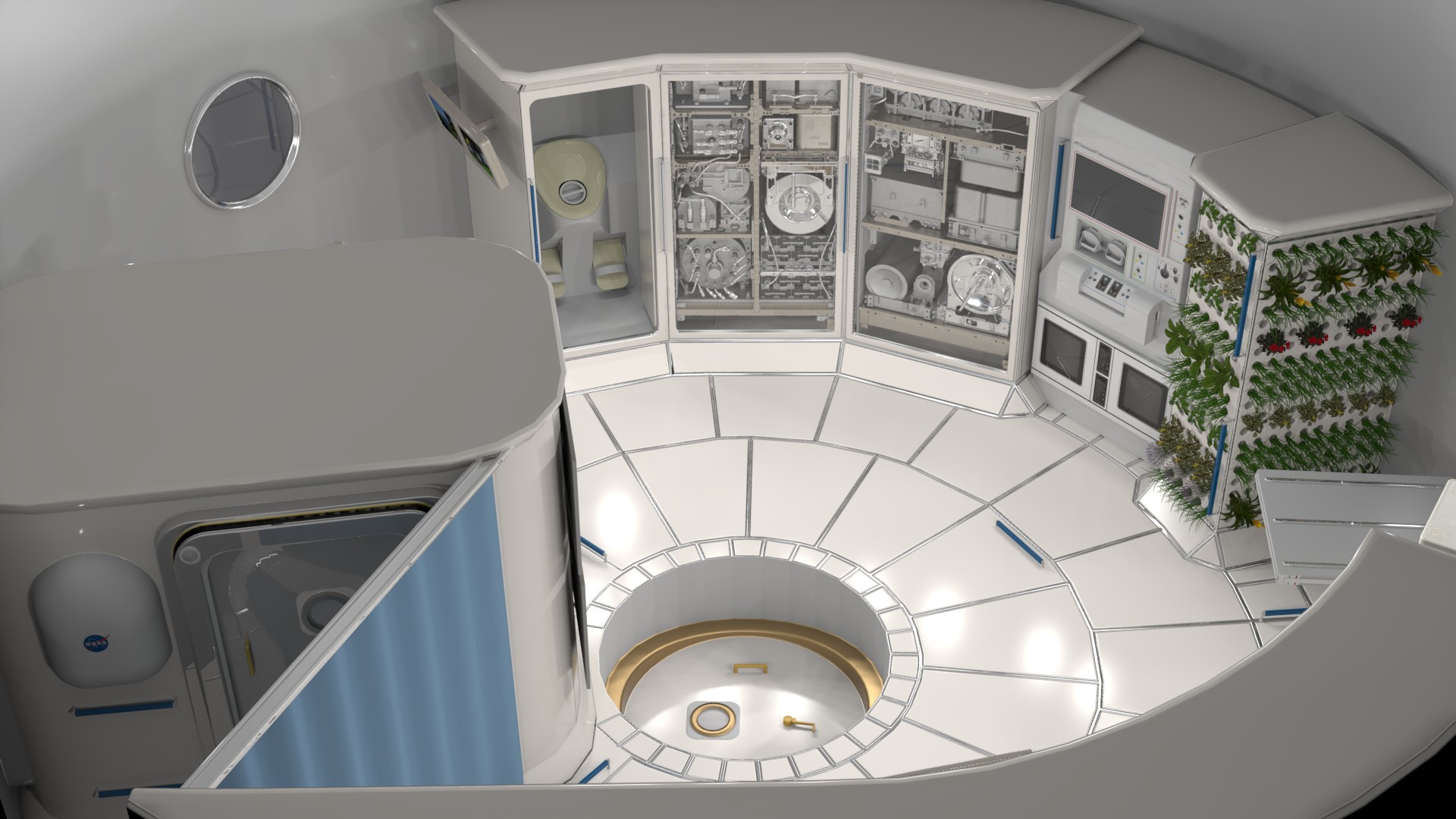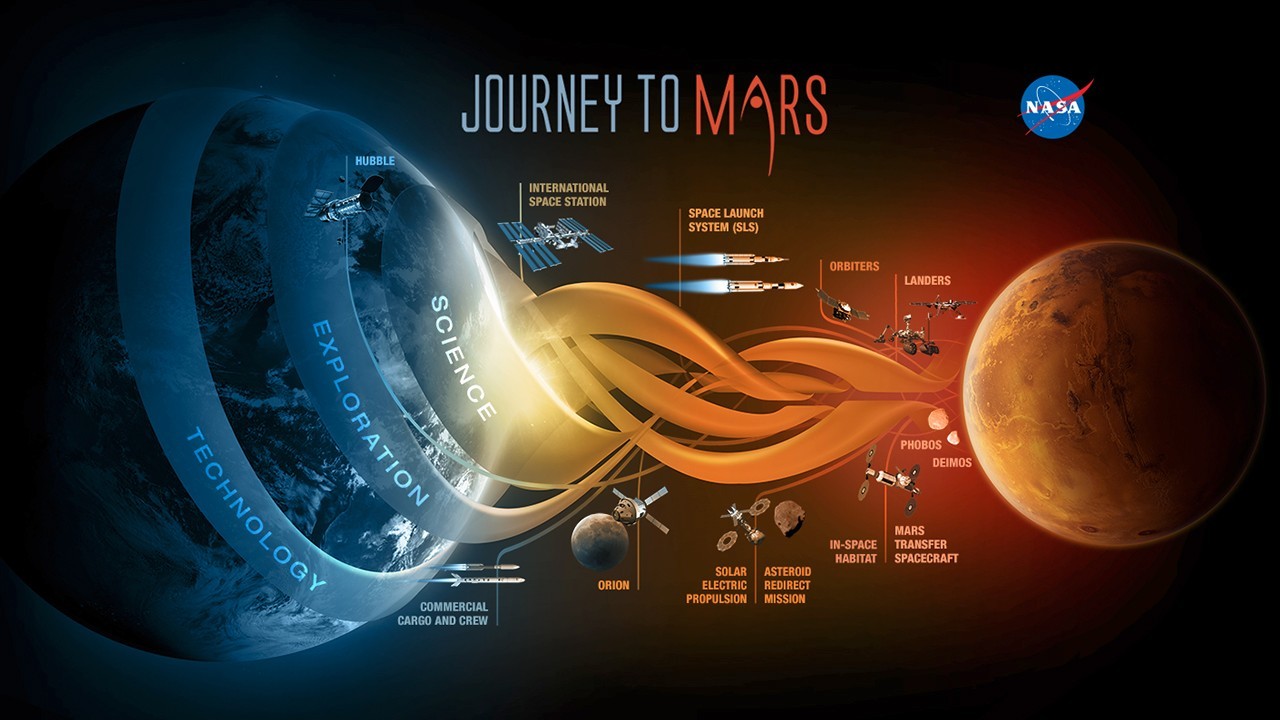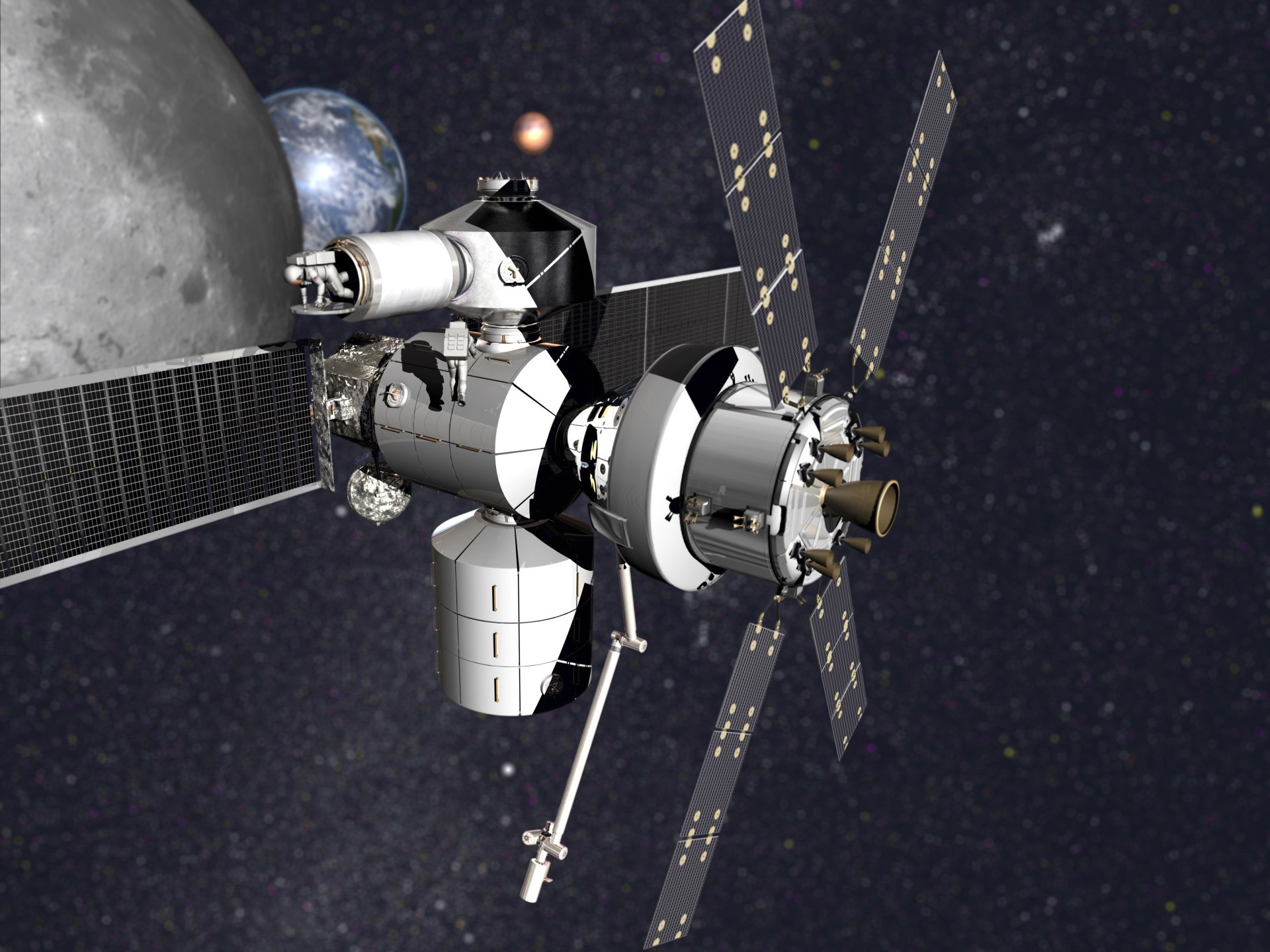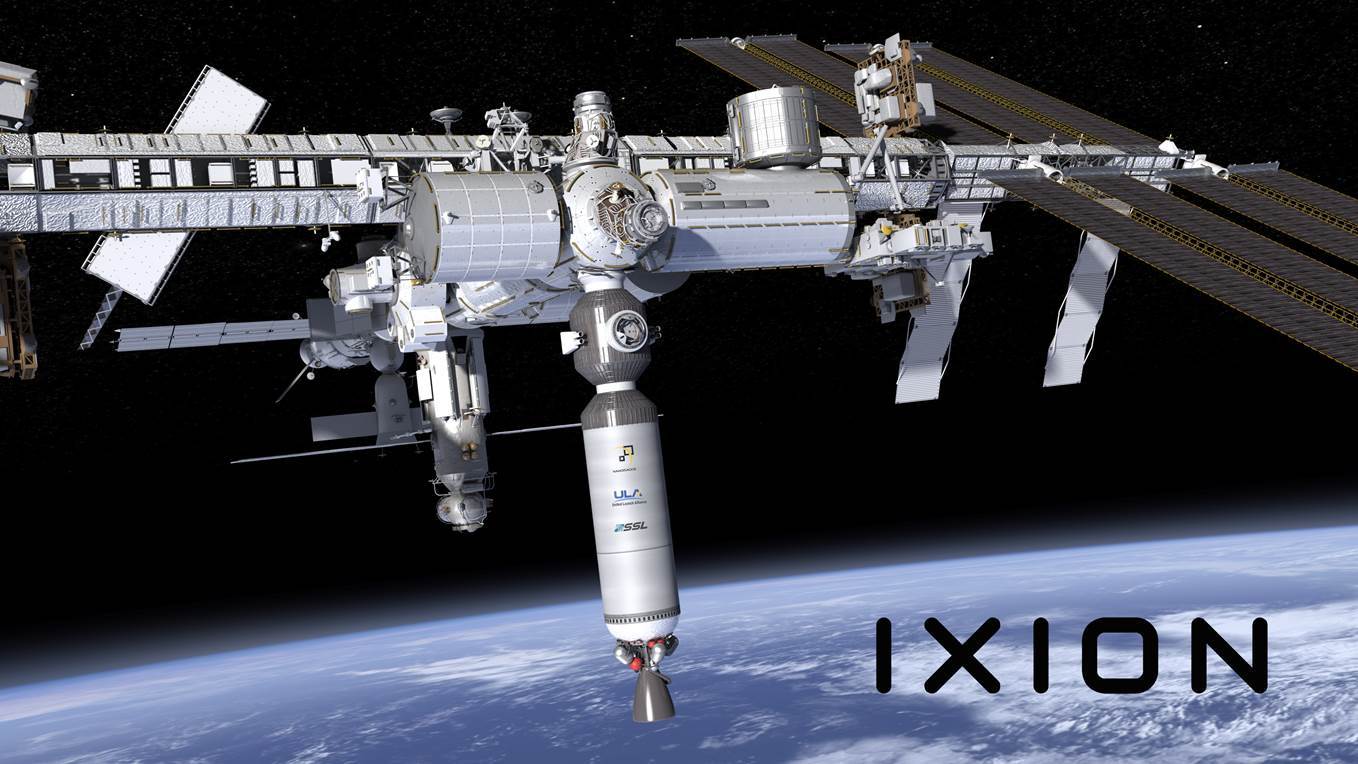NASA has selected contractors to develop housing in deep space

The concept of the interior of a habitable station in deep space. Image: NASA
NASA selected six US companies to develop prototype residential modules in deep space. These developments are necessary for the mission with the landing of astronauts on Mars , which is scheduled for the 2030s.
NASA will allocate $ 65 million to six companies for design and engineering work over the next two years, with the possibility of additional funding in 2018. Each company must cover at least 30% of the cost of the work at its own expense. Below are the recipients of grants (including specific regional divisions of corporations).
- Bigelow Aerospace, Las Vegas
- Boeing, TX
- Lockheed Martin, Denver
- Orbital ATK, Virginia
- Sierra Nevada Corporation's Space Systems of Louisville, Colorado
- NanoRacks, Texas
Financing of the development is carried out within the framework of the Next Space Technologies for Exploration Partnerships-2 (NextSTEP-2) public-private partnership program.
')

American Mars Exploration Plan
As is known, according to the plan for the development of Mars, the launch vehicle Space Launch System (SLS) should bring a spacecraft into the deep space with the first astronauts who set foot on the surface of Mars. On the way to the Red Planet, they need long-term housing, where people are able to live and work for months and years without receiving food and other goods from the Earth.
Each of the six companies has up to 24 months to produce a fully functional ground prototype and / or conduct a thorough study of the home in deep space.
Manufactured ground-based prototypes will be used for three main purposes: for complex testing of 1) systems; 2) human factor; 3) operability to determine the overall functionality of the complex. The collected information is used to make a real flight module, which will be sent for testing into orbit.
Under the terms of NASA, the residential unit should be a sealed compartment with an integrated set of integrated systems and components, including docking function, climate control, life support system, logistics management system, radiation protection and monitoring system, fire safety technology and maintaining crew health.
This is how today the projects of residential modules of six companies look like.
Bigelow Aerospace LLC

The “inflatable” (extensible) XBASE module (Expandable Bigelow Advanced Station Enhancement) with a volume of 330 m 3 is based on a real BEAM module with a volume of 16 m 3 , which has recently been deployed on the ISS .
Boeing

Lockheed martin

Lockheed Martin intends to convert its universal module into a full-fledged residential module.
Orbital ATK

The concept of the Orbital ATK company is based on the cargo spacecraft Cygnus, which now serves the ISS.
Sierra Nevada Corporation's Space Systems of Louisville

The prototype of Sierra Nevada Corporation is based on the Dream Chaser cargo module.
NanoRacks

NanoRacks partners Space Systems Loral and the United Launch Alliance united in the alliance Ixion Team. They intend to study the possibility of turning the upper stage of a multi-stage rocket into a residential module. Such a low-budget solution should be suitable for any launch vehicle, including SLS.
Developed residential modules will be suitable for living not only in deep space, but also in orbit. They will also be useful in future lunar missions. In general, NASA seeks to stimulate private development in this area so that private companies can more actively master the earth's orbit, including for space tourism.
Source: https://habr.com/ru/post/396809/
All Articles